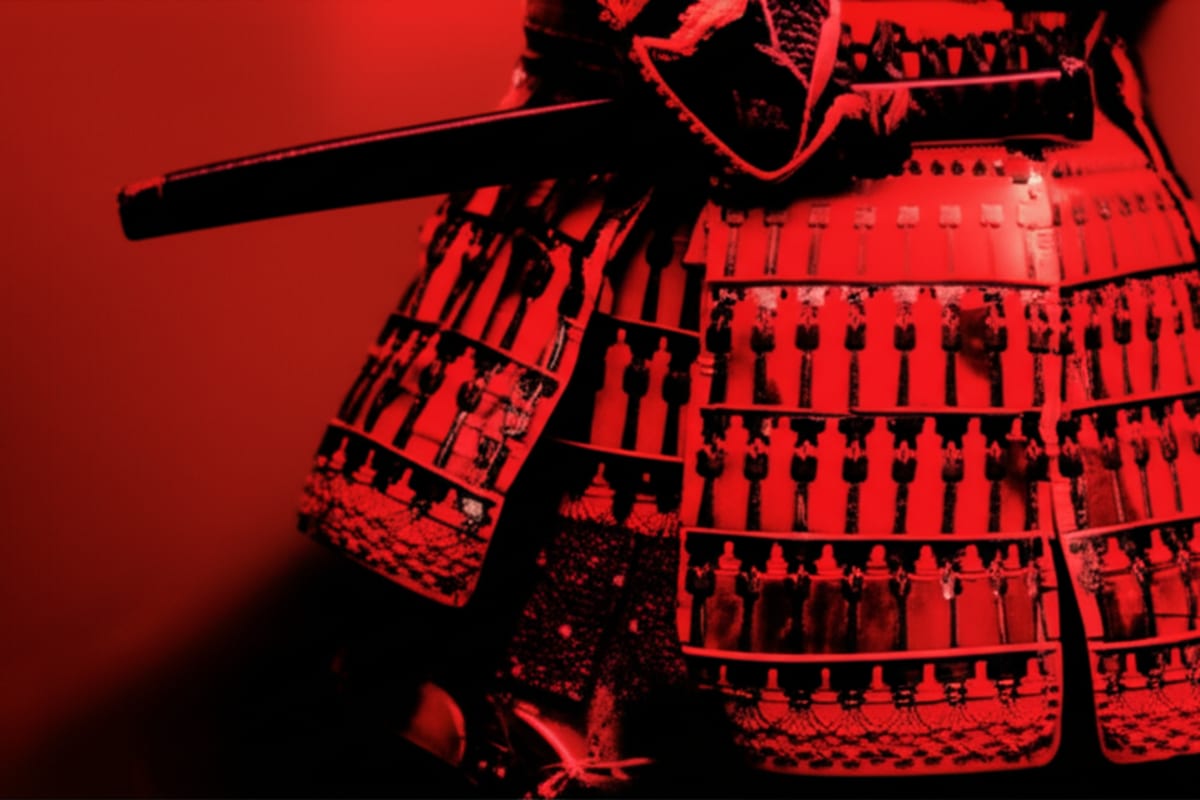British Museum to Unmask the Real Samurai: Beyond the Katana, Women & Art Revealed

Forget everything you think you know about Japan’s legendary samurai.
Background
Seriously, just for a moment, let go of the cinematic duels, the lone, stoic warriors, and the hyper-stylized world of video games
Because come next year, the British Museum is ready to pull back the curtain on a thousand years of history, promising to deliver an exhibition that will fundamentally challenge – and enrich – our understanding of Japan’s iconic warrior elite
Set to open its doors in 2025, the appropriately titled 'Samurai' exhibition isn't just another showcase of gleaming armour and fearsome blades
Oh no, this is a groundbreaking deep dive into a world far more intricate and nuanced than the popular imagination typically allows.
It's an exclusive look that promises to unveil the complex reality of these powerful figures, moving well beyond the armour-clad heroes we’ve come to idolize through Akira Kurosawa’s classic action films or the immersive, high-octane adventures on PlayStation consoles
Beyond the Blade: Unveiling a Complex Reality For generations, our collective image of the samurai has been largely shaped by heroic narratives focused almost exclusively on battle and honour in its most brutal form
We envision the bushido code, the unwavering loyalty, and, of course, the deadly, elegant katana
And while these elements are undoubtedly part of the story, they're only a fraction of it.
This exhibition, as teased by The Guardian, is ready to fill in the vast blanks, bringing to light aspects of samurai life and influence that have, for too long, remained in the shadows
The exhibition promises a nuanced understanding of samurai as not just warriors, but also patrons of arts and culture.
“The British Museum’s upcoming 'Samurai' exhibition will challenge popular myths about Japan's warrior elite, revealing a more complex reality, showcasing the significant roles of women and the artistic contributions within samurai culture
” The Forgotten Half: Women in the Samurai World What truly makes this upcoming show so compelling is its stated commitment to revealing a 'complex reality,' specifically highlighting the presence and contributions of women. This isn't just a minor footnote; it’s a seismic shift in how we perceive this historical class.
Historically, women in samurai households played crucial roles, not just as wives and mothers, but as administrators of vast estates, educators, and sometimes even as formidable fighters themselves – the 'Onna-Bugeisha' or female warriors, whose existence often goes unmentioned in mainstream retellings
These women were trained in martial arts, often skilled with naginata or other polearms, and were expected to defend their homes and families in times of war
Their agency and influence were considerable, managing finances, overseeing servants, and contributing significantly to the cultural life of samurai clans
Imagine the strategic minds, the quiet courage, and the unwavering resilience these forgotten figures held, now finally given their due recognition on a global stage
This inclusion promises to be one of the most eye-opening aspects of the exhibition, challenging simplistic, male-centric historical narratives.
Samurai as Cultural Architects: Beyond the Battlefield Beyond the battlefield, the samurai class were often profound patrons of the arts, deeply involved in cultural pursuits that shaped Japanese aesthetics for centuries
From the disciplined beauty of the tea ceremony – chado – to the serene philosophy of Zen Buddhism, from the intricate strokes of calligraphy to the evocative verses of poetry, the samurai were not just killers; they were cultured individuals who cultivated a deep appreciation for beauty, philosophy, and spiritual enlightenment
This exhibition promises to showcase these artistic creations, demonstrating a sophistication and depth that defies the one-dimensional warrior trope
We're talking about exquisite paintings, ornate lacquerware, intricate textiles, and perhaps even examples of the very tea utensils they cherished.
These weren't mere hobbies; they were extensions of their philosophical outlook, embodying discipline, precision, and an appreciation for transient beauty
The mastery of these arts was considered as vital to a samurai's cultivation as their martial prowess, reflecting a holistic ideal of personal excellence
Visitors can expect to see how these cultural elements permeated daily life, from the design of their homes to the rituals they observed, offering a truly immersive look into their world
A Millennium in Review: The Evolution of a Legacy The exhibition is set to span a millennium, allowing visitors to trace the evolution of the samurai from their origins as provincial warrior bands serving landowners to becoming the ruling military aristocracy that governed Japan for centuries, eventually evolving into the highly revered, albeit eventually ceremonial, figures of the Edo period
This long arc means a rich tapestry of social, political, and cultural shifts will be explored, offering context to their rise, reign, and eventual transformation
It’s a historical journey that promises to be as enlightening as it is visually spectacular
From the rough-and-tumble warrior bands of the Heian period, through the establishment of the Kamakura Shogunate, the turbulent Sengoku Jidai (Warring States period), and into the peaceful 250 years of the Tokugawa Shogunate, the exhibition will illustrate how the samurai identity was constantly reinterpreted and redefined
This comprehensive historical overview helps to explain how their image evolved, moving beyond the popular image popularised by films and video games to reveal the profound complexities of their socio-political role
Southeast Asian Echoes: A Regional Lens on Global History For those of us in Southeast Asia, where Japanese culture, from anime to martial arts, holds a significant sway, this exhibition takes on an added layer of fascination
While our own diverse histories boast formidable warrior traditions – think of the Javanese Ksatria, the Filipino Datus, or the Malay warriors – the global image of the samurai has often overshadowed others
This British Museum show offers a chance to not only deepen our appreciation for Japanese history but also to perhaps draw parallels, to reflect on universal themes of honour, duty, power, and art that resonate across our own distinct cultural narratives
In our region, warrior traditions are woven into the very fabric of our heritage, from the martial arts like Silat and Arnis to the epic tales of heroes and leaders who defended their lands and cultures
Understanding the multifaceted nature of the samurai can help us to better appreciate the similar depth in our own warrior classes, who were also often patrons of arts, administrators, and custodians of spiritual traditions
It reminds us how much cultural exchange and understanding truly matter, and how a seemingly distant history can still speak to us today, connecting our shared human experiences through the lens of warrior traditions
This nuanced exploration can foster greater appreciation for historical complexity and cultural diversity, beyond often-simplified pop culture portrayals
It aligns with a broader trend in museums to deconstruct colonial-era narratives and present more inclusive, multi-faceted histories, a particularly relevant undertaking for Southeast Asian audiences who have often viewed history through external lenses
Why This Matters: A Deeper Dive for the Curious Mind What does this mean for you, the avid history buff, the cultural explorer, or even just the curious mind
It means an opportunity to expand your horizons, to engage with history not as a static set of facts, but as a living, breathing narrative ripe for re-evaluation
It’s a chance to see that history is often far more complex, inclusive, and fascinating than the simplified versions we’re often fed
You'll walk away not just with new knowledge, but with a richer, more nuanced perspective on a group of people whose legacy has profoundly impacted global culture
This exhibition, hosted by one of the world's leading cultural institutions, is significant in its effort to revise and enrich global understanding of a widely romanticized historical group
In a world increasingly interconnected by media, where historical figures like the samurai are often distilled into archetypes, a major exhibition challenging these narratives serves as a vital cultural intervention
It offers a unique opportunity for global audiences, including those in Southeast Asia, to gain a deeper, more accurate historical perspective
